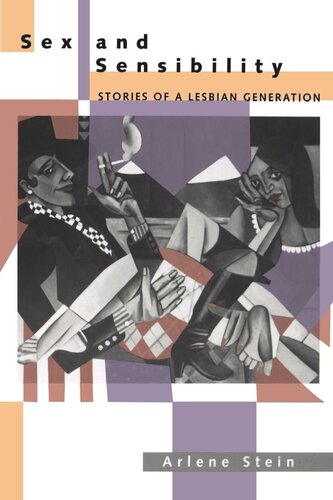

Most ebook files are in PDF format, so you can easily read them using various software such as Foxit Reader or directly on the Google Chrome browser.
Some ebook files are released by publishers in other formats such as .awz, .mobi, .epub, .fb2, etc. You may need to install specific software to read these formats on mobile/PC, such as Calibre.
Please read the tutorial at this link: https://ebookbell.com/faq
We offer FREE conversion to the popular formats you request; however, this may take some time. Therefore, right after payment, please email us, and we will try to provide the service as quickly as possible.
For some exceptional file formats or broken links (if any), please refrain from opening any disputes. Instead, email us first, and we will try to assist within a maximum of 6 hours.
EbookBell Team

0.0
0 reviewsIn the first book to analyze shifts in lesbian identity, consciousness, and culture from the 1970s to the 1990s, Arlene Stein contributes an important chapter to the study of the women's movement and offers a revealing portrait of the exchange between a radical generation of feminists and its successors. Tracing the evolution of the lesbian movement from the bar scene to the growth of alternative families, Stein illustrates how a generation of women transformed the woman-centered ideals of feminism into a culture and a lifestyle.
Sex and Sensibility relates the development of a "queer" sensibility in the 1990s to the foundation laid by the gay rights and feminist movements a generation earlier. Beginning with the stories of thirty women who came of age at the climax of the 70s women's movement—many of whom defined lesbianism as a form of resistance to dominant gender and sexual norms—Stein explores the complex issues of identity that these women confronted as they discovered who they were and defined themselves in relation to their communities and to society at large.
Sex and Sensibility ends with interviews of ten younger women, members of the post-feminist generation who have made it a fashion to dismiss lesbian feminism as overly idealistic and reductive. Enmeshed in Stein's compelling and personal narrative are coming-out experiences, questions of separatism, work, desire, children, and family. Stein considers the multiple identities of women of color and the experiences of intermittent and "ex" lesbians.
Was the lesbian feminist experiment a success? What has become of these ideas and the women who held them? In answering these questions, Stein illustrates the lasting and profound effect that the lesbian feminist movement had, and continues to have, on contemporary women's definitions of sexual identity.